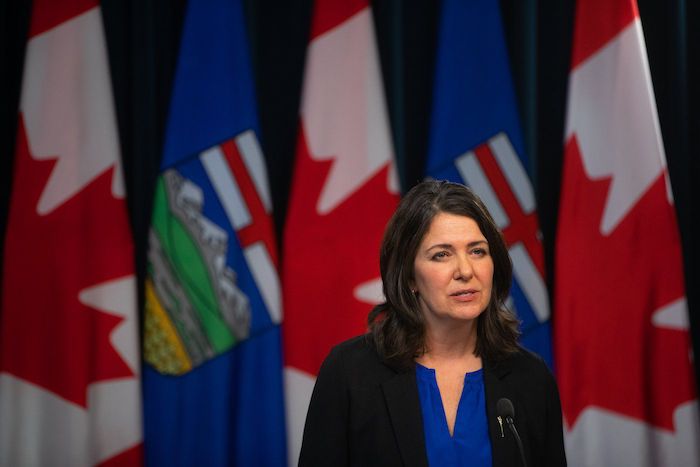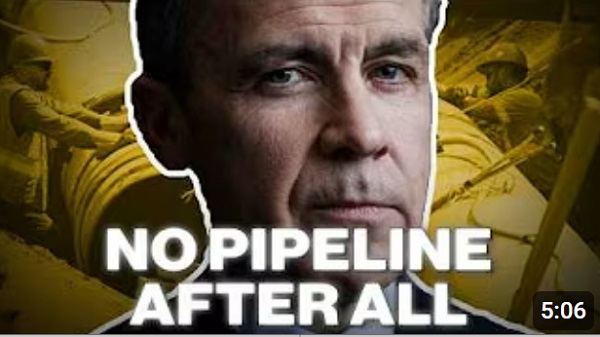Alberta
Premier Smith issues statement on rehabilitating orphan wells

Rehabilitating problematic oil and gas sites: Statement from Premier Smith
Premier Danielle Smith issued the following statement in response to inaccurate claims about the government’s ongoing efforts to rehabilitate Alberta’s oldest and most problematic oil and gas development sites, many of which have flare pits, sumps and other environmental hazards that must be cleaned up promptly:
“Of the approximately 83,000 inactive wells in Alberta, approximately 20,000 were drilled before 1980 and have been inactive for more than 20 years. The number and potential environmental problems posed by these older well sites worsen with time. For example, the number of orphaned wells surged from approximately 705 in 2015 to 5,279 in March 2019, a staggering increase of approximately 648 per cent during that time frame. This failure has led to an environmental hazard for which they provide no realistic solutions to address.
“In response to that failure, the government has introduced regulations mandating oil and gas companies spend a prescribed minimum amount on well site closure and reclamation work. The minimum amount to be spent by industry on this ongoing cleanup work has grown to about $740 million this year and will increase by nine per cent annually in the coming years. This action will fix the orphan well backlog that previous governments failed to address and continue to ignore today.
“In addition, Minister of Energy Peter Guthrie is consulting with landowners, Indigenous groups and industry to design a rehabilitation pilot program to expeditiously clean up these pre-1980 inactive well sites. This consultation process will take several months to complete, after which the cabinet and government caucus will consider the feedback provided and make a final decision on whether and how to proceed with the program.
“The pilot program under consideration would potentially provide a royalty credit on new oil and gas development for energy companies willing to also invest in cleaning up these problematic well sites. The amount spent on cleaning up these sites would have to be over and above the amount these same companies are legally required to spend on regular well site rehabilitation.
“While final decisions have not been made, the total amount of royalty credits proposed to be used for the pilot program is likely to be up to $100 million over three years – after which time, the government would assess the effectiveness of the program and consult again before deciding how best to proceed. It is hoped the pilot program will greatly accelerate the cleanup of the most unpredictable and challenging oil and gas sites in Alberta.
“Bluntly put, these problematic well sites must be promptly and properly cleaned up. The government is designing a pilot for a program that is good for the environment, respects landowners’ rights and the rights of Indigenous groups, and incentivizes industry to simultaneously invest more in both the cleanup of these well sites and new resource development.
“This is the first government to try to find solutions to this problem and we look forward to the results of the consultations.”
Alberta
They never wanted a pipeline! – Deputy Conservative Leader Melissa Lantsman

From Melissa Lantsman
Turns out the anti-development wing of the Liberal Party never stopped running the show.
Today, we’ll see if the Liberals vote for the pipeline they just finished bragging about.
Spoiler: they won’t. Because with the Liberals, the announcements are real, but the results never are.
Alberta
Premier Smith: Canadians support agreement between Alberta and Ottawa and the major economic opportunities it could unlock for the benefit of all

From Energy Now
By Premier Danielle Smith
Get the Latest Canadian Focused Energy News Delivered to You! It’s FREE: Quick Sign-Up Here
If Canada wants to lead global energy security efforts, build out sovereign AI infrastructure, increase funding to social programs and national defence and expand trade to new markets, we must unleash the full potential of our vast natural resources and embrace our role as a global energy superpower.
The Alberta-Ottawa Energy agreement is the first step in accomplishing all of these critical objectives.
Recent polling shows that a majority of Canadians are supportive of this agreement and the major economic opportunities it could unlock for the benefit of all Canadians.
As a nation we must embrace two important realities: First, global demand for oil is increasing and second, Canada needs to generate more revenue to address its fiscal challenges.
Nations around the world — including Korea, Japan, India, Taiwan and China in Asia as well as various European nations — continue to ask for Canadian energy. We are perfectly positioned to meet those needs and lead global energy security efforts.
Our heavy oil is not only abundant, it’s responsibly developed, geopolitically stable and backed by decades of proven supply.
If we want to pay down our debt, increase funding to social programs and meet our NATO defence spending commitments, then we need to generate more revenue. And the best way to do so is to leverage our vast natural resources.
At today’s prices, Alberta’s proven oil and gas reserves represent trillions in value.
It’s not just a number; it’s a generational opportunity for Alberta and Canada to secure prosperity and invest in the future of our communities. But to unlock the full potential of this resource, we need the infrastructure to match our ambition.
There is one nation-building project that stands above all others in its ability to deliver economic benefits to Canada — a new bitumen pipeline to Asian markets.
The energy agreement signed on Nov. 27 includes a clear path to the construction of a one-million-plus barrel-per-day bitumen pipeline, with Indigenous co-ownership, that can ensure our province and country are no longer dependent on just one customer to buy our most valuable resource.
Indigenous co-ownership also provide millions in revenue to communities along the route of the project to the northwest coast, contributing toward long-lasting prosperity for their people.
The agreement also recognizes that we can increase oil and gas production while reducing our emissions.
The removal of the oil and gas emissions cap will allow our energy producers to grow and thrive again and the suspension of the federal net-zero power regulations in Alberta will open to doors to major AI data-centre investment.
It also means that Alberta will be a world leader in the development and implementation of emissions-reduction infrastructure — particularly in carbon capture utilization and storage.
The agreement will see Alberta work together with our federal partners and the Pathways companies to commence and complete the world’s largest carbon capture, utilization and storage infrastructure project.
This would make Alberta heavy oil the lowest intensity barrel on the market and displace millions of barrels of heavier-emitting fuels around the globe.
We’re sending a clear message to investors across the world: Alberta and Canada are leaders, not just in oil and gas, but in the innovation and technologies that are cutting per barrel emissions even as we ramp up production.
Where we are going — and where we intend to go with more frequency — is east, west, north and south, across oceans and around the globe. We have the energy other countries need, and will continue to need, for decades to come.
However, this agreement is just the first step in this journey. There is much hard work ahead of us. Trust must be built and earned in this partnership as we move through the next steps of this process.
But it’s very encouraging that Prime Minister Mark Carney has made it clear he is willing to work with Alberta’s government to accomplish our shared goal of making Canada an energy superpower.
That is something we have not seen from a Canadian prime minister in more than a decade.
Together, in good faith, Alberta and Ottawa have taken the first step towards making Canada a global energy superpower for benefit of all Canadians.
Danielle Smith is the Premier of Alberta
-

 COVID-192 days ago
COVID-192 days agoUniversity of Colorado will pay $10 million to staff, students for trying to force them to take COVID shots
-

 Bruce Dowbiggin2 days ago
Bruce Dowbiggin2 days agoIntegration Or Indignation: Whose Strategy Worked Best Against Trump?
-

 Focal Points2 days ago
Focal Points2 days agoCommon Vaccines Linked to 38-50% Increased Risk of Dementia and Alzheimer’s
-

 espionage2 days ago
espionage2 days agoWestern Campuses Help Build China’s Digital Dragnet With U.S. Tax Funds, Study Warns
-

 Opinion2 days ago
Opinion2 days agoThe day the ‘King of rock ‘n’ roll saved the Arizona memorial
-

 Bruce Dowbiggin2 days ago
Bruce Dowbiggin2 days agoWayne Gretzky’s Terrible, Awful Week.. And Soccer/ Football.
-

 Agriculture2 days ago
Agriculture2 days agoCanada’s air quality among the best in the world
-

 Business1 day ago
Business1 day agoCanada invests $34 million in Chinese drones now considered to be ‘high security risks’






